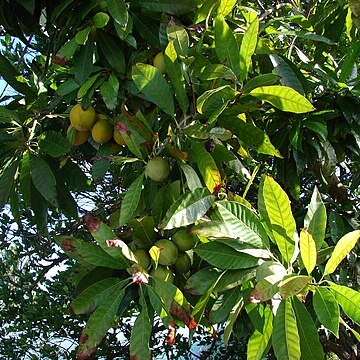Trees or shrubs. Branchlets glabrous or pubescent but glabrescent. Leaves usually alternate, not stipulate; leaf blade papery to leathery, both surfaces usually pubescent when young but glabrescent when mature, sometimes abaxially glabrous and adaxially appressed pubescent, lateral veins conspicuous. Flowers in axillary clusters, sometimes with 2--4 bractlets. Sepals (4 or)5(or 6), outside pubescent, inside glabrous or sericeous, early deciduous or persistent in fruit. Corolla tubular to campanulate, 4-or 5--8-lobed, appendages absent. Stamens (4 or)5(--8), inserted in throat of corolla; staminodes less than 5 or 5--8, opposite sepals, lanceolate to subulate, sometimes scalelike to petal-like. Ovary conical, sometimes with cup-shaped disc at base, 5(or 6)-locular, ± villous. Fruit globose, glabrous or tomentose, sometimes setose; pericarp thin to thick, sometimes very hard when dry. Seed coat shiny, scar oblong to broadly ovate, covering half to nearly whole surface of seed.
Trees or occasionally shrubs, lacking spines. Leaves alternate or sometimes subopposite; blades membranous or coriaceous, the primary lateral veins strongly arcuate near the margin, not crowded, the secondary laterals often ? perpendicu-lar to the primary laterals (at least toward the margin), occasionally irregular. Flowers white to yellow or green, pedicellate or sessile, the fascicles axillary to leaves or leaf-scars; sepals 4-12, uniseriate or biseriate (always 2 + 2); corolla cylindric to subrotate, the lobes 4-6(-7), lacking appendages; staminodes petaloid or more often not petaloid (lance-filiform, linear or small and inconspicuous); staminal filaments attached at or near the top of the corolla-tube, less frequently at the middle or near the base (virtually free); ovary pubescent, (1-)4 to 10-loculed, the ovules attached laterally. Fruit fleshy or woody or gall-like! seeds 1-several, lacking endosperm, the scar lateral, exceeding the middle of the seed, often broad.

